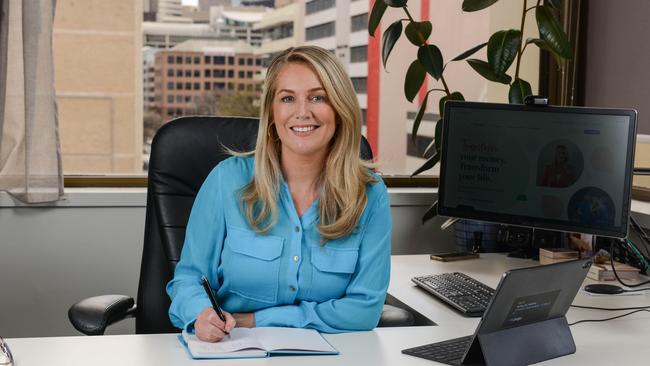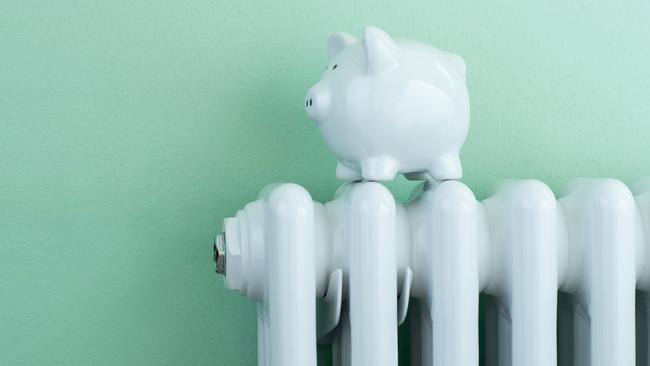Electricity bill shock: how to lower the pain of July 1 price rises
Huge increases in electricity prices will hammer households from July 1, so we’ve asked energy experts to share their top money-saving tips.
National
Don't miss out on the headlines from National. Followed categories will be added to My News.
Say goodbye to the 2022-23 financial year, and brace yourself for 2023-24’s whole new world of financial pain when it comes to power prices.
Electricity regulators have effectively set benchmark price rises of around 25 per cent, and some customers of major energy retailers will pay 30 per cent more for every kilowatt of power they use from July 1.
The price surge adds to other living cost pain in housing, fuel, food and insurance, so households are looking to lower their bills.
Electricity usage can be cut more easily than some other bills such as rent or food, experts say, so consider these 23 power-saving tips to start 2023-24.
1. Understand your current energy use. Your latest bill may show how your household consumption compares, while energymadeeasy.gov.au has a simple Energy Usage Calculator to see how you stack up.
2. Check if you pay too much. MyBudget director Tammy Barton said there was no harm in shopping around. “There are a number of great comparison sites and free independent comparison tools on state government sites that compare up to 20 service providers across electricity, gas and solar,” she said.

3. Don’t overheat your home: experts say around 20 degrees is an optimum airconditioner temperature in winter. Energy Assessors director Daniel Clark said adjusting a thermostat by 1-2 degrees could cut heating costs 10 per cent and “result in an annual saving of $100 to $200”.
4. Keep heat in by closing doors to rooms not in use, or throwing an extra blanket on the bed, Mr Clark said.
5. Weather-proofing works. “Sealing gaps and cracks around windows and doors can save you up to 15 per cent … this could mean $100 to $200 per year,” Mr Clark said.
6. Rug up. A new Finder.com.au survey suggests almost three quarters of Australians are cutting back on heating because of cost-of-living pressures, and Finder utilities specialist Mariam Gabaji said “wearing extra layers” inside could help.
7. Choose heating wisely, as Finder research shows bar heaters and tower heaters can cost 50 to 200 per cent more to run than reverse-cycle airconditioning.
8. Switch to LED lighting. “By replacing traditional incandescent bulbs with energy-efficient LED lights, you can save up to 80 per cent on lighting costs, which translates to an average annual saving of $100-$150,” Mr Clark said.
9. Unplug appliances when not in use. Mr Clark said standby power could add 10 per cent to bills.
10. Energy retailer Nectr’s chief marketing officer, Karren Challoner-Miles, said standby power “vampire energy” consumption could cost $200 a year and also included phone chargers, so turn them off when not charging.
11. Do a home energy audit. “Older homes may require upgrades to improve their energy efficiency but it can come with huge savings,” Ms Challoner-Miles said.
12. Rooftop solar energy bundles with no upfront cost, monthly interest-free instalments, and competitive energy rates were making it easier to power homes with the sun, Ms Challoner-Miles said.
13. Service Today founder Zak Saboune said energy-efficient appliances were important. “Each energy rating star saves you on your power bill,” he said.
14. Having your hot water system on a timer so it only heated at certain times could save up to 30 per cent on hot water heating costs, Mr Saboune said.
15. Ensure your home is insulated. “Up to 40 per cent of heat loss occurs through your ceiling if not insulated,” Mr Saboune said.

16. Energy savings in the kitchen can be achieved by covering pots and pans to reduce cooking time, only turning on the dishwasher when full, and checking that your fridge seals work properly.
17. Mr Clark from Energy Assessors said microwave ovens were an energy-efficient cooking appliance. “To use your microwave for one hour every day would cost you about half the total energy of a natural gas oven and 60 per cent less than an electric oven,” he said.
18. Laundries offer money-saving potential, and MyBudget’s Ms Barton said selecting shorter washing machine cycles and washing clothes in cold water could “save up to $115 per year”.
19. A clothes dryer can cost more than $1 per load, so use outside sunshine or an indoor drying rack where possible.
20. Check for freebies and financial help, as there are several government assistance packages and energy incentive schemes available.
21. Ditch double refrigeration. “Do you really need that second fridge or deep freeze, particularly during the winter months?” My Budget’s Ms Barton said.
22. Make small changes to your daily habits – such as switching off lights or unplugging electronics – and the savings will come, Ms Barton said.
23. Be proactive. If you do nothing, your next power bill will be 20-30 per cent higher. That’s great motivation to do something now.
Originally published as Electricity bill shock: how to lower the pain of July 1 price rises





